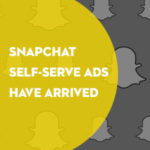It kind of seems like world’s biggest statement of the obvious “Higher Education Has Changed.” No kidding right? But if it is SO OBVIOUS why is most of higher education still acting like it’s 1995? You might laugh, but you know it’s true. Look around you, look at your institution, what year is it?
When you glance over the infographic you see a compilation of issues that were not even on the radar for most colleges and universities in 1995. Online education, For-Profit Institutions, Young Alumni Engagement, Moocs, the Cost of College….. these issues were hardly a whisper on the landscape nearly 20 years ago. How quickly times have changed. Today you can’t attend a Higher Education Conference in North America without hearing about all of them. If we really wanted to go crazy we could just as well add Social Media, Competency Based Learning, Big Data, Digital Marketing, and Web Analytics to the list.
I have heard some speakers say the “conversation has shifted” in higher education but honestly, I am beginning to think that’s a lie. The conversation hasn’t shifted, it is an entirely new conversation! The language of higher education is different today than it ever has been before. The intensity with which these changes have steam rolled their way into the higher education arena demands attention, and the seriousness of the consequences for those schools refusing to deal with what is solidly right in front of their face continues to rise.
The good news? For the schools that are pushing themselves; delving into this new language, and having the difficult conversations on their campuses each and every day the potential for payoff is huge. Is there risk? Of course. Staying relevant in a fast changing market is risky business, and there will be stumbles along the way, but there will also be victories. Those schools that are progressively evaluating opportunities, making decisions, and moving at the accelerated pace that is required in our increasingly changing higher education culture, have the greatest potential for success.
The gap is getting wider. The schools that are being progressive, embracing the changing landscape of higher education, and making the most of their opportunities to get out in front are all moving toward one side. And the schools that are holding on to the past with two hands? They find themselves further and further behind looking out across what is now a vast divide that is becoming increasingly wider.
So I ask you, what side do you see yourself on? When you hear the phrase “higher education is changing” do you fill in the line with “and so are we”? Or are you stuck with “but we are not”? It’s a tough question, but one you must ask yourself now.







